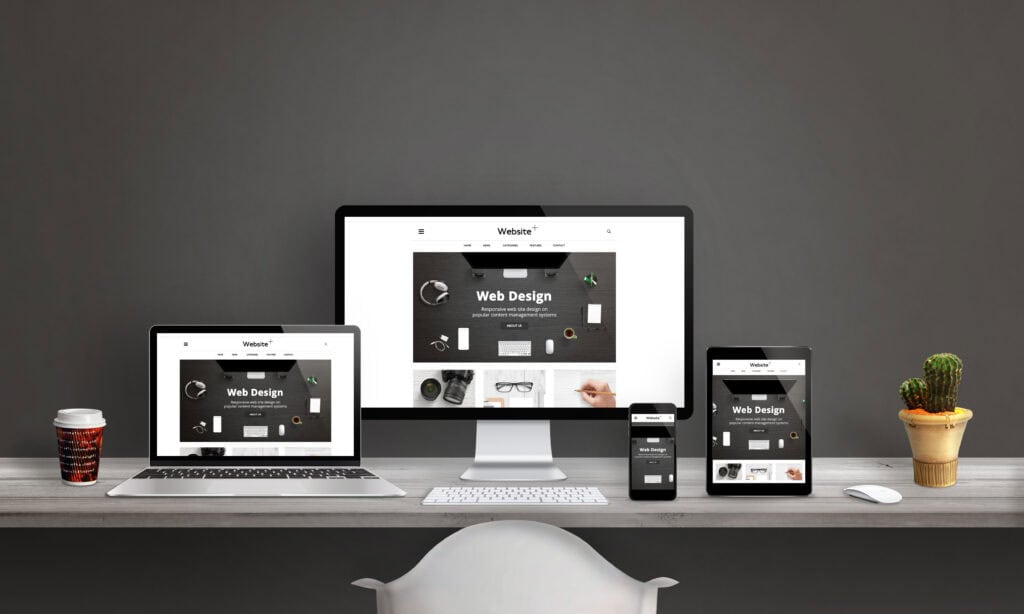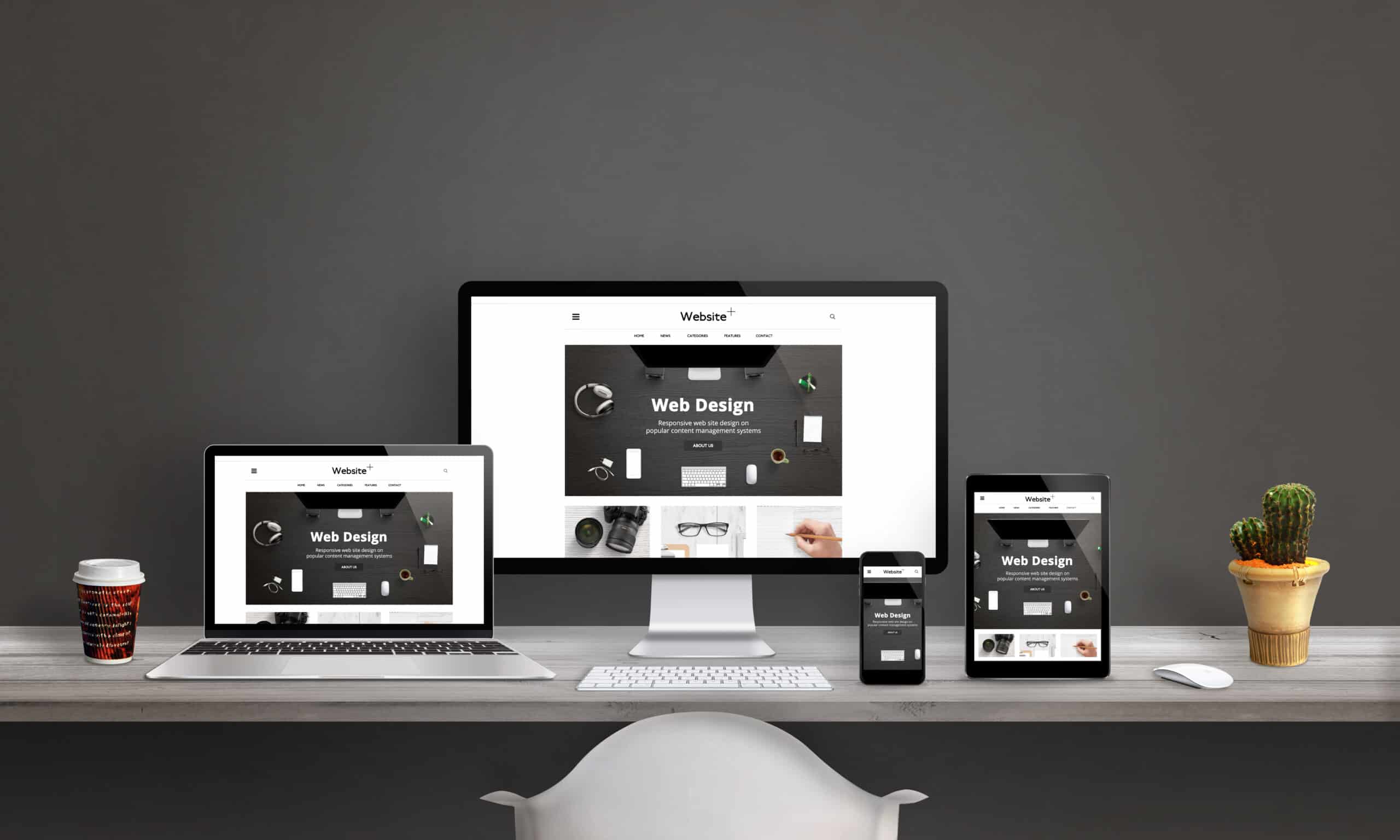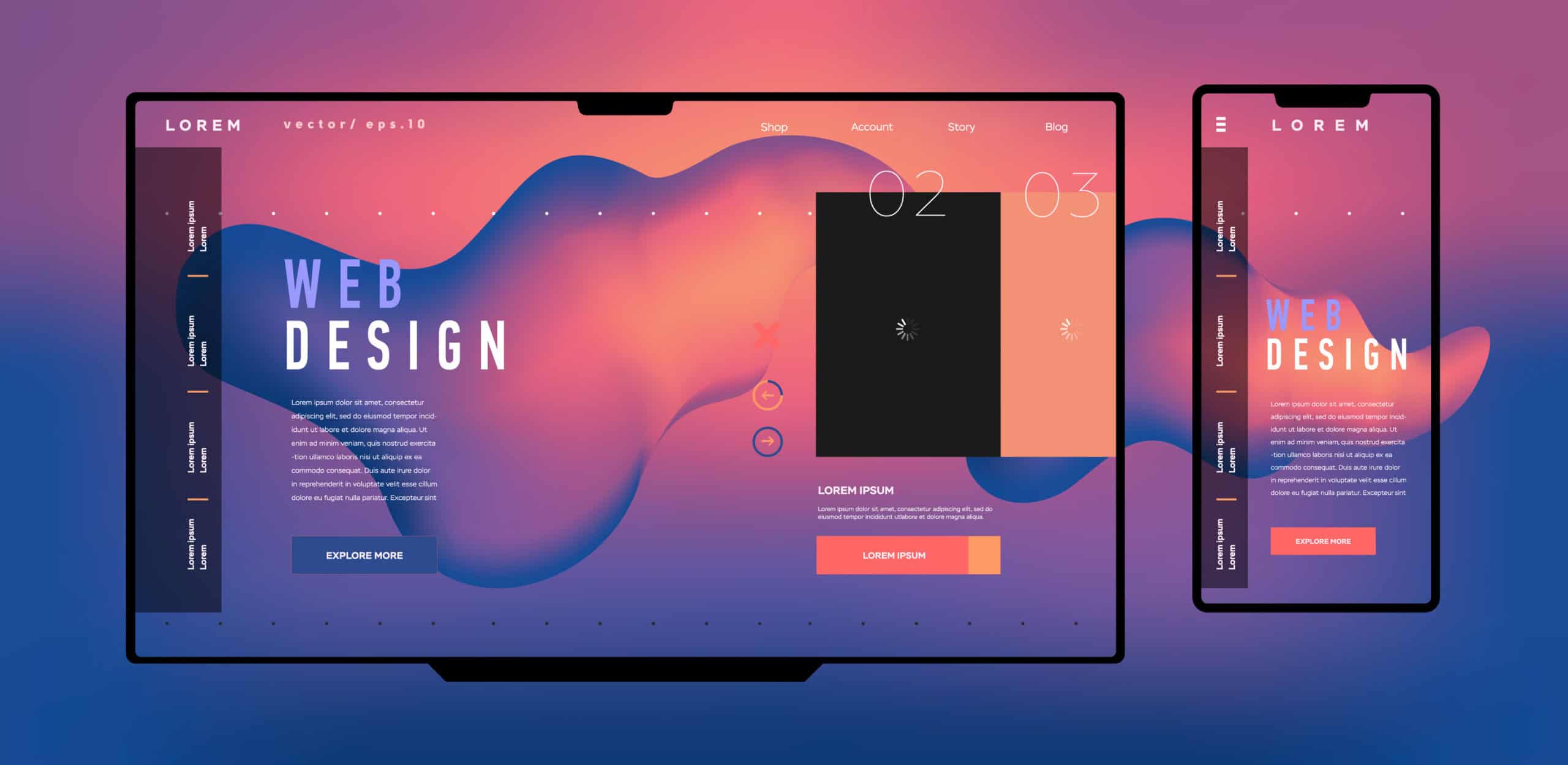It is a well-known fact that a professional website is no longer a luxury for businesses; it’s essential.
Whether you’re launching a new venture or have an established company, your site often serves as the digital shopfront for your brand’s online presence. This means that choosing the right web designer can make all the difference in how effectively you capture attention and connect with your audience.
Unless you are directly linked to a web development service, finding the right website development team for you can feel daunting. To do this, we must first understand what they do.
A website designer is primarily responsible for creating the visual elements that define how a website looks and, more importantly, how it feels for the users who frequent it.
This doesn’t just involve the layout, but also the colour schemes, typefaces and overall aesthetic appeal of the site.
So the aim of a website designer is to enable your site to be user-friendly, aesthetically pleasing, and in line with your brand’s overall identity.

The Art and Science of Web Design
Website design is a unique blend of art and science.
Designers must possess a keen eye for aesthetics while understanding user behavior and how design influences interaction. They must use the knowledge of what looks good with knowledge of how people want to interact online.
They create intuitive interfaces that guide visitors seamlessly through the site, ensuring an engaging experience.
The Designer’s Toolbox
Web designers use a variety of software to bring a site to life.
From Adobe Creative Suite to Sketch to Figma, designers are able to create mockups, prototypes, and final designs that essentially look like the finished product. They have expert abilities and capabilites in using these often complex and layered systems to show clients exactly what the site will look like ahead of creation.
The Difference Between a Web Designer and a Web Developer
It’s a common misconception that web designers and web developers are interchangeable.
While their roles can occasionally overlap (and in some cases, web designers can also be developers and vice versa), they cater to distinct aspects of website creation.
A web designer focuses on the site’s visual look, ensuring it is user-centric.
In contrast, a web developer handles the site’s functionality, focusing on coding and technical elements. It’s essential to clarify what specific skills you require before making a hiring decision.
Bridging the Design and Development Gap
Effective collaboration between designers and developers is crucial for a successful website. Designers lay the visual groundwork, which developers then bring to life. Understanding how these roles complement each other can help you manage your project more effectively.
Web Design Agencies
Web design agencies typically bring a wealth of resources and a broader spectrum of expertise to the table. They are particularly well-suited for larger projects that need a variety of skills, such as graphic design, SEO, and development.
Comprehensive Services Under One Roof
Agencies often offer a one-stop shop experience, providing a range of services from design to development and digital marketing. This comprehensive approach ensures consistency across all aspects of your website.
Access to a Team of Experts
Agencies house diverse teams, each specialising in different areas of web design and development. This multidisciplinary approach can be beneficial for complex projects that require skill sets.
Considerations for Agency Costs
While agencies offer extensive expertise, they often come with higher price tags. Understanding your project’s scope and budget is key to determining whether an agency is a viable option for you.
Key Considerations When Hiring a Website Designer
When embarking on the process of hiring a website designer, there are several critical factors to keep in mind to ensure you make an informed decision.
Experience and Portfolio
An experienced website designer or web design agency will have a portfolio that showcases their previous work.
Reviewing a designer’s portfolio provides valuable insights into their style, creativity, and attention to detail. It’s essential to look for projects that align with your vision for your own site.
Evaluating a Designer’s Style
A designer’s portfolio is a window into their design style and aesthetic preferences. As you review their work, consider whether their style aligns with your brand’s identity and the image you wish to project.
Assessing Creativity and Innovation
Creativity is a hallmark of great design. Look for signs of innovation in their portfolio, such as unique layouts or creative use of color and typography. A creative designer can bring fresh ideas to your project.
The Importance of Diverse Experience
A diverse portfolio indicates a designer’s ability to adapt to different industries and project requirements. A designer with experience across various niches can provide valuable insights and solutions tailored to your specific needs.
Understanding Your Needs
Before reaching out to potential designers, it’s crucial to have a clear understanding of your project’s scope and requirements. Determine the features you want, your budget, and your timeline. Having this information at hand will facilitate effective communication and help you find a designer who can meet your needs.
Defining Project Goals and Objectives
Clear objectives are the foundation of a successful project. Outline your goals, whether it’s increasing user engagement, enhancing brand visibility, or improving user experience. A well-defined objective guides the design process.
Budgeting and Resource Allocation
Establishing a budget early on is essential to finding a designer whose services align with your financial constraints. Consider not only the design costs but also potential expenses for development, hosting, and maintenance.
Timeline and Milestones
Setting a realistic timeline ensures that the project progresses smoothly. Discuss potential milestones with your designer to track progress and ensure timely completion.
Communication Skills
Effective communication is vital in any collaborative effort. During the hiring process, pay attention to how well the designer listens to your ideas and responds to your questions. Clear communication ensures that the project stays on track and aligns with your vision.
Open and Transparent Dialogue
A designer who communicates openly can address your concerns and provide clarity on project details. Transparency builds trust and fosters a productive working relationship.
Responsiveness and Availability
Timely communication is crucial, especially when addressing revisions or feedback. Ensure the designer is responsive and readily available to discuss project developments.
Collaborative Problem Solving
Effective communication involves more than just exchanging information. A good designer will actively engage in problem-solving, offering solutions and ideas that enhance the project’s outcome.
Asking the Right Questions
When looking at potential website designers, asking the right questions can provide valuable insights into their process and capabilities. Here are some questions to consider:
Can You Walk Me Through Your Design Process?
Understanding a designer’s workflow can give you a sense of their organisational skills and how they approach problem-solving. A well-defined process indicates professionalism and reliability.
Stages of the Design Process
Ask about the different stages of their design process, from research and ideation to prototyping and final delivery. Each stage should be clearly outlined and explained.
Inquire about how they incorporate client feedback into their process. Effective designers will have structured methods for collecting and integrating feedback throughout the project.
Explore the tools and technologies they use during the design process. Familiarity with industry-standard software and tools is a good indicator of their expertise.
Find out how they balance your vision with practical design considerations. A skilled designer will find a middle ground that satisfies both aesthetic desires and functional requirements.
How Do You Handle Revisions and Feedback?
Revisions are a natural part of the design process. Ask how they manage revisions and incorporate client feedback. A flexible and accommodating approach is a good sign.
Clarify how many revision rounds are included in the project scope and whether additional revisions incur extra costs. Clear expectations prevent misunderstandings later on.
Constructive Feedback Mechanisms
Discuss how they handle constructive criticism and ensure that feedback is implemented effectively. A designer who values input and strives for improvement is an asset to any project.
Responsive design is critical for modern websites. Ask about their experience in creating responsive layouts and ensuring cross-device compatibility.
Explore the techniques they use to achieve responsive design, such as fluid grids, flexible images, and media queries. These techniques ensure that the site adapts seamlessly to different devices.
Testing Across Devices
Inquire about their approach to testing designs across various devices and browsers. Comprehensive testing ensures consistent user experiences.
Adapting to Emerging Technologies
Discuss how they stay updated with emerging technologies and design trends. A proactive approach to learning and adapting can future-proof your website.
Can You Provide References from Past Clients?
References from previous clients can offer valuable insights into a designer’s reliability, communication skills, and ability to deliver quality work. Contacting references can give you a clearer picture of what to expect.
Red Flags to Watch For
Be attentive to any red flags, such as missed deadlines, poor communication, or subpar deliverables. These can indicate potential challenges in working with the designer.
Understanding Brand Guidelines
A website should reflect your brand’s identity and values. Ask how they ensure the design aligns with your brand’s unique characteristics and messaging.
Inquire about their process for understanding and incorporating brand guidelines into the design. A designer who values brand consistency will enhance your brand’s online presence.
Discuss how they approach both visual and emotional branding. A successful design evokes the right emotions and reinforces your brand’s message.
Find out how they tailor designs to reflect your brand’s uniqueness. A customised approach ensures that your website stands out in a competitive market.
Setting a Budget for Your Website Design
Website design costs can vary widely depending on the complexity of the project and the expertise of the designer. Setting a realistic budget ahead of time will help you find a designer who can deliver quality work within your financial constraints.
Factors Influencing Cost
Several factors can influence the cost of website design:
Complexity: A simple website with a few pages will cost less than a complex site with custom features.
The complexity of your site is a significant cost driver. Simpler sites require less time and resources, while complex sites with custom features demand more effort and expertise.
Experience: More experienced designers often charge higher rates.
A designer’s experience level can impact their rates. While experienced designers may charge more, they bring valuable insights and skills that can enhance your project.
Timeline: If you need a project completed quickly, you may need to pay a premium for expedited service.
Urgent projects often require designers to prioritize your work, which can lead to higher costs. Plan your project timeline to avoid unnecessary premiums.
Conclusion
Hiring a website designer is a critical step in establishing a strong online presence. By understanding the role of a designer, considering your options, and asking the right questions, you can find a professional who will help bring your vision to life. Remember, a well-designed website is an investment in your business’s future success.
Take the time to choose a designer who aligns with your goals and can deliver a site that resonates with your audience and enhances your brand. By investing in a skilled designer, you’re laying the foundation for a successful online presence that can grow and adapt with your business.





